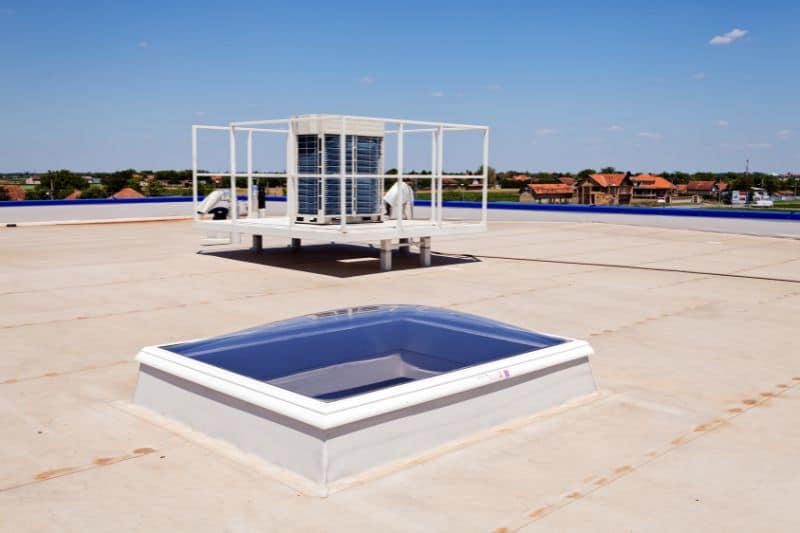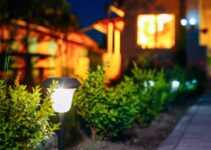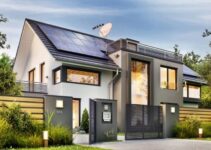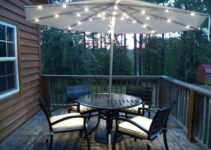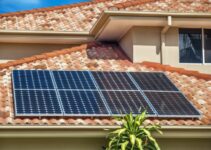Are you thinking of investing in solar panels?
If the answer to that question is affirmative, you’re about to join two million other property owners who enjoy cheaper, more environmentally sustainable and friendly electricity.
But then, amidst the hype, one question may linger: Can solar panels be laid flat on the roof?
Well, we understand the appeal of flat roofs – they are cheaper, easier to install, and management is more affordable and straightforward.
But then, can they work perfectly well with a solar panel, or must you build a slanting structure on top of your roof?
Well, that is the essence of this article – you’ll not only know if solar panels can be laid flat on the roof but also important things to consider if you decide to go ahead with your desire to install solar panels.
Can Solar Panels be Installed Flat?
Yes, you can install solar panels flat, but they will experience a degree of energy loss without the slightest inclination toward the sunlight. Although it certainly is advantageous to have a roof that is inclined in the sun’s direction, a flat surface will also do.
With a flat roof, your solar panels will still get direct sunlight, which is the whole point of putting them on the roof. So, even with a flat or a low-slope roof, you can still install solar panels and enjoy the power and affordability of solar energy.
But to fully harness the sun’s power, your solar panels must be installed at the best angle, facing the sun and soaking in as much sunlight as possible. This is because as much as the photovoltaic cells, or PV cells, are hypersensitive, they still need full sun exposure for maximum performance.
In essence, you will know if you have been allowing your solar panels to receive enough sunlight if you regularly enjoy a solid six to twelve hours of electricity when the sun isn’t shining or at night.
When installing solar panels on a flat roof, there are three ways to go about it: the attached method, ballasted style, and foundational solar panels.
The Attached Method
This method uses chemicals like resin or some other structure to secure the panels because flat roofs may lack protective walls (parapets). This prevents the panels from being blown away by the wind.
The Ballasted Style
Your next option is a ballasted style. This installation method involves the placement of heavy items on the surface instead of drilling holes or using resin. Ballasts will be placed on the top and sealed with cement to prevent wind from upturning the panels. It’s crucial to consult an expert to determine the right weight for your solar panels if you choose this method.
Foundational Solar Panels
Finally, if you have space and high parapet walls on your roof, you can install foundational solar panels, which will stay put.
Should Solar Panels Be Flat or Angled?
Solar panels should not be flat because they can collect water, which will build up on the surface and damage the solar cells. So, it is much better to angle them; not too much – as little as three to four degrees tilt will ensure that rainwater continually glides off the surface if you have a flat roof.
Otherwise, you can expect a reduction in performance because the water will accumulate to create a sheen over the glass surface, thereby reducing the amount of energy that hits.
As for the other types of roof, there is already a naturally structured tilt. In this case, your preoccupation should be installing the solar panels in the direction of the sunlight and not against it to maximize the energy the PV cells can act on.
Another reason solar panels need to be tilted is so that they easily capture solar energy for maximum performance. Unless the sun is perpendicular above your solar panels, you shouldn’t expect the typical six to twelve hours of sunlight a PVC system offers.
The tilt is there because less distance between the sun and the surface of the panels means better access to sunlight.
Refusal to angle your solar panels can amount to an energy loss. However, you may not notice it, depending on your energy needs. In addition, a buildup of water is inevitable on solar panels that lack an angle, no matter how minor.
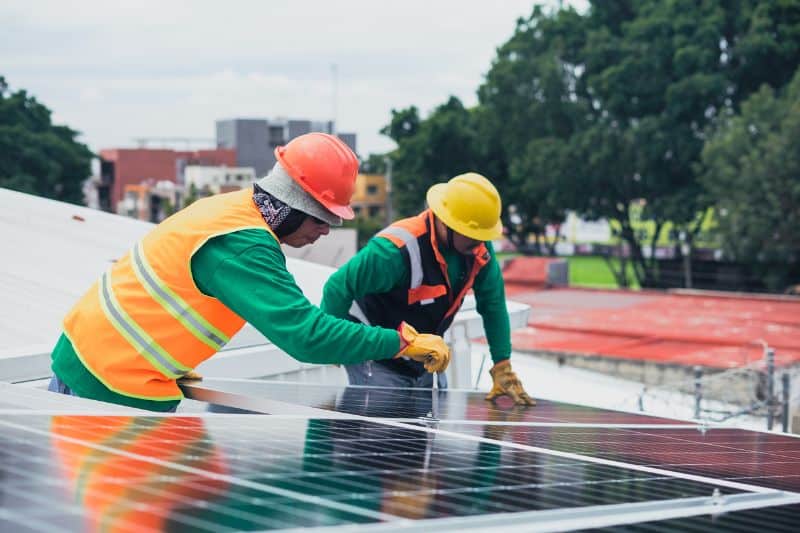
Advantages and Disadvantages of Flat-Roof Solar Panels
Installing solar panels on a flat roof has upsides and downsides. They will help you determine whether the investment is worth it or not.
Advantages of Flat-Roof Solar Panels
Some of these advantages include:
Installation is a Breeze
You will spend much less if you want to install solar panels on a flat roof. This is because the PVC system is easier to mount or erect and requires fewer tools and equipment.
Maintenance is Less Challenging
Maintaining solar panels on a flat roof is less challenging. It lacks the slanting angles other roof types are famous for, so creating a maintenance routine for the solar structure won’t be a hassle. Plus, you won’t need too much equipment or tools to complete the process.
The Panels Won’t Reduce the Appeal of Your Home
A flat roof is exactly that – so people from across the street don’t see what is mounted on top. This can be great for maintaining the appeal of your property and keeping it safe. If thieves and the less scrupulous in society cannot see your solar panels, they won’t target your property.
Disadvantages of Flat-Roof Solar Panels
The drawbacks here include:
They Need to Be Installed Properly
Your investment is unsafe if your solar panels are poorly installed on your roof. And typically, flat roofs lack the structure required for attaching the panels to the roof, so you will need to consider an alternative.
If nothing secures your solar panels to the roof, they will come off at the slightest inconvenience.
They Get Dirty Easily
Unfortunately, flat-roof solar panels get dirty easily. This is because they are mounted flat, leaving no room for rainwater to wash off the dirt and debris accumulating.
They are More Susceptible to Destruction by Wind
Because flat-roof solar panels are not attached to the roof structure, it is easier for the wind to remove them when there is excessive force. This is even riskier if you have chosen a method like a ballasted style without consulting a professional for assistance.
You must ensure your solar panels are too strong for the wind to upturn.
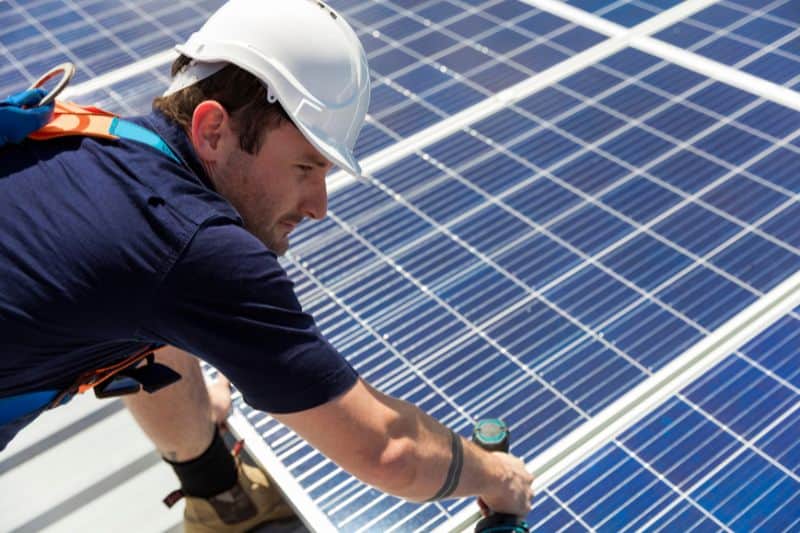
What is the Best Position for Solar Panels?
The best position for solar panels is an angle tilted toward or perpendicular to the sunlight. This is to maximize the energy that is realized from the sun. In addition, the direction the solar panels face is equally important. If you install them towards the south, you can prevent an energy loss of up to twenty percent!
You should avoid mounting them on the northern side of your roof, as they won’t receive the amount of energy they need for high performance.
Regardless of the roof type, the best angle to tilt your solar panels is between thirty to forty-five degrees. Note that you may be required to adjust the tilt during the winter. That means you can stay a step ahead by installing solar panels with a feature that allows you to change the direction of the panels with a remote.
However, the average slanting roof is angled between thirty to forty-five degrees, which is marvelous for solar panels.
Overall, a professional is best positioned to determine how you should mount your solar panels. This is very important, especially if you have a flat roof. They will also advise you on the most suitable anchoring method after considering the weather elements in your region.
A good tilt or angle is essential if you don’t want rainwater to collect on the panels. If that happens, it will reduce the efficiency of the PVC system and may even lead to damage over time. Solar panels are not waterproof, merely water resistant.
Do You Need Planning Permission for Flat Roof Solar Panels?
You need planning permission for flat roof solar panels if you live in the United States. You will contact two parties: your electric company and the local building authority. It takes some time, though – from a few days to weeks.
The process can take a while, so it’s important to fill out the forms accurately and submit them on schedule. If you’re thinking about installing solar panels on your flat roof, starting the permit process early will help you kick off your project sooner.
Several steps are involved before you are qualified to install solar panels on your roof. For one, an engineer must come around to check that the structure is suitable for the weight of solar panels.
At the end of the day, you will have about fifteen pages of paperwork to submit to the Authority Having Jurisdiction, the AHJ, and your utility company. You cannot skip this step if you want to install flat-roof solar panels.
You should prepare to pay a fee – usually north of a hundred dollars because of the inspections that must be conducted on your property. You will know if your request has been approved within a few weeks.
But if it is denied, you will be told why and how you can rectify the situation. Check here for more information about the standards and requirements for installing solar panels.
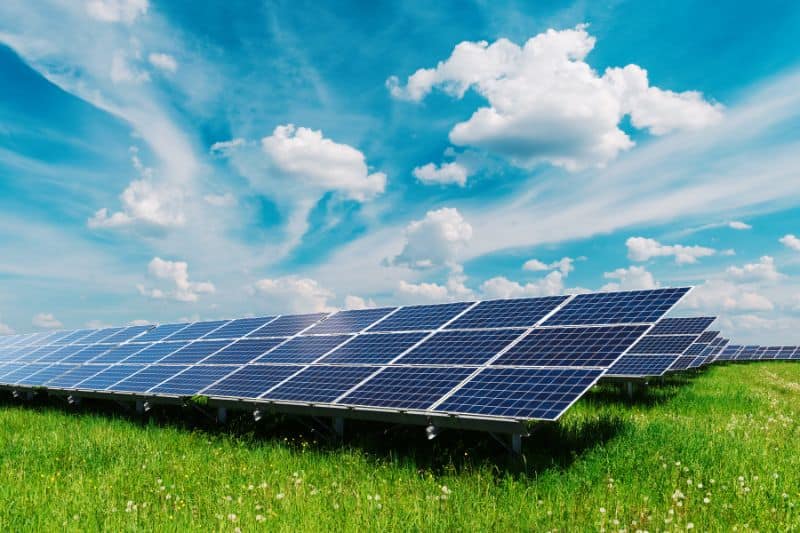
Things to Consider Before Installing Flat Roof Solar Panels
Before you install flat roof solar panels, please consider the following things:
The Wind Speed
If you do not consider the wind speed for your region before installing solar panels, they may not last as long as they should. It will be easier for the wind to toss and turn them around, and the structure may come off one day. So, inform the manufacturer of this information for the suitable racking.
The Mechanical Units
Flat roofs are excellent for items like your parapets, exhaust fans, water pipes, drains, and vents. You need to consider these before installing solar panels on the roof.
Conclusion
If you have a flat roof, that’s no reason to miss out on the rewards of using solar energy. Not only will you save a ton of money in the long run, but you can also reduce your carbon emissions.
